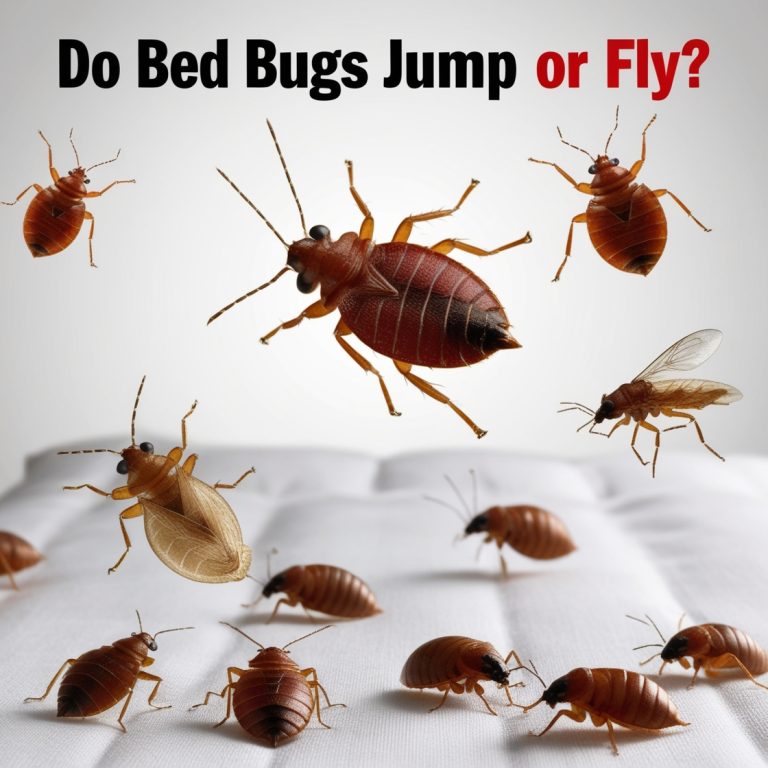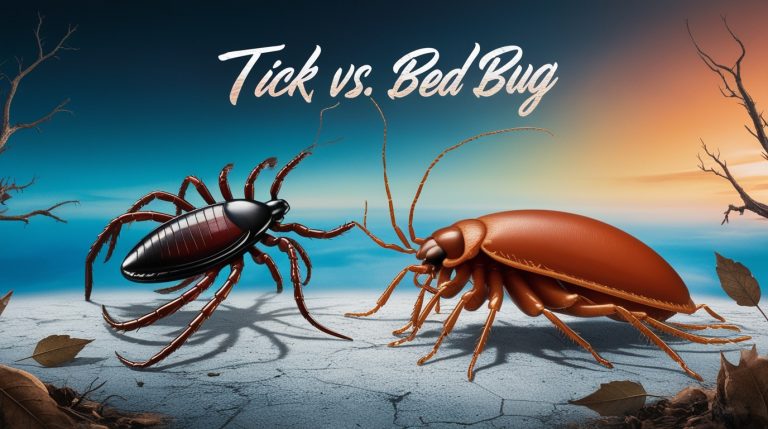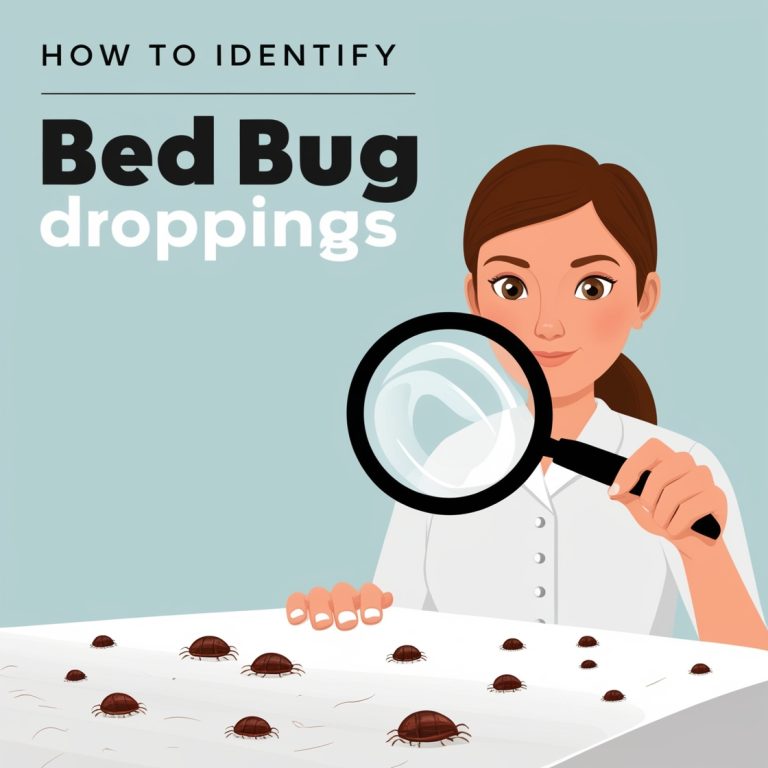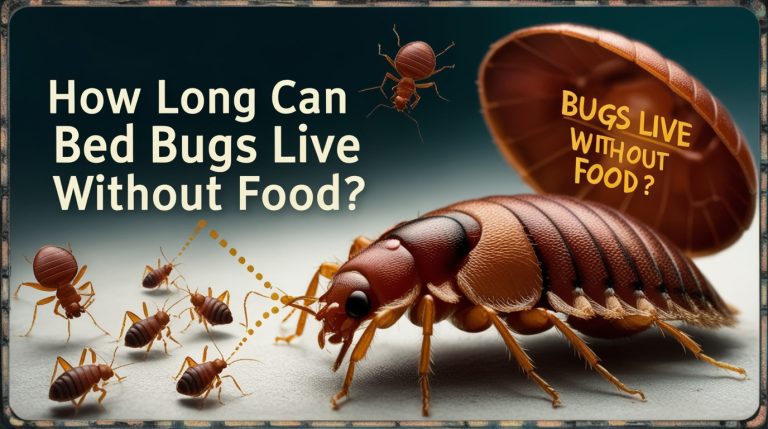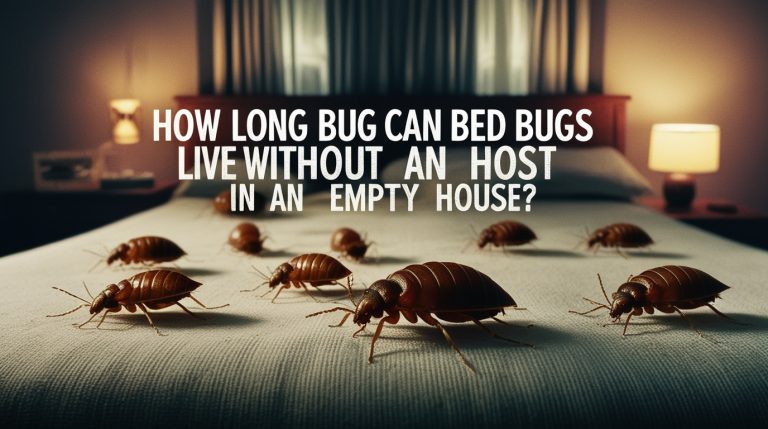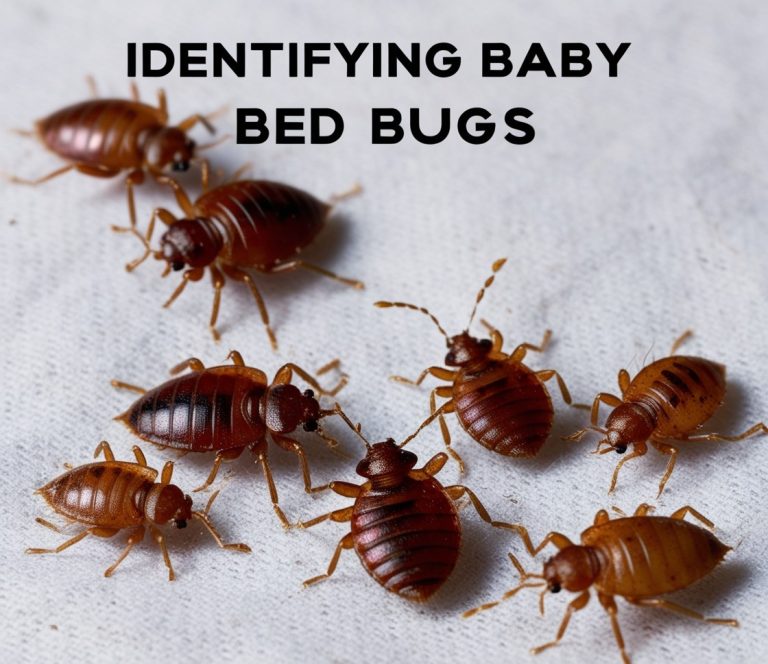How to get bed bugs out of couch | 13 Easy ways
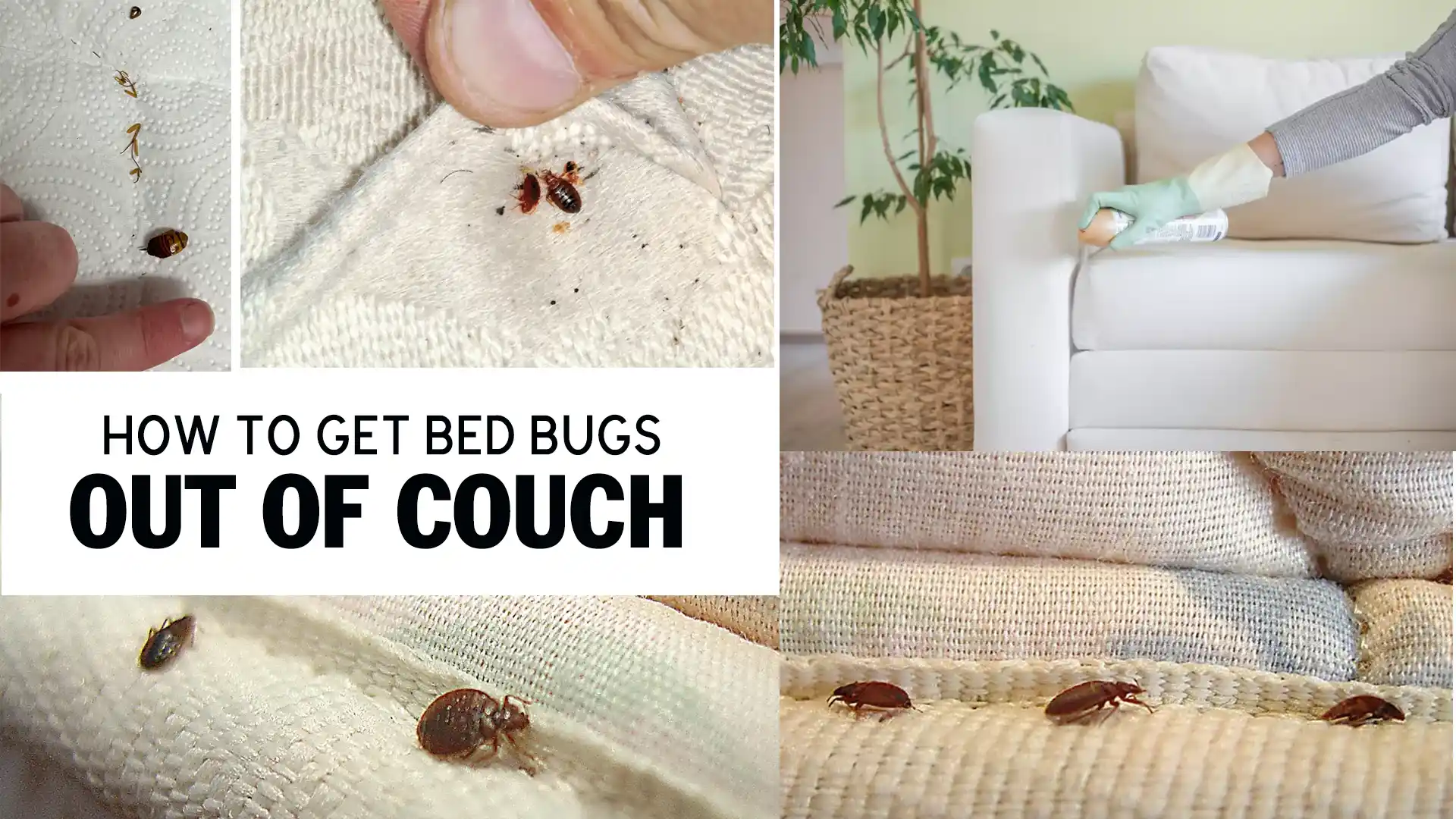
Getting bed bugs out of your couch, sofa, or any upholstered furniture can be challenging. This comprehensive guide covers everything you need to know to inspect, treat, and prevent bed bug infestations in your couch.
What Are Bed Bugs?
Bed bugs are small, flat, parasitic insects. They feed on human and animal blood. An adult bed bug grows to about 1/4 inch long. Their flat bodies allow them to hide away in tiny crevices and cracks in furniture.
Bed bugs don’t have wings. They can’t fly or jump. But they can crawl very quickly over floors, walls, furniture, and even ceilings. Female bed bugs can lay up to 500 eggs over their lifetime. This allows infestations to grow rapidly.
Do Bed Bugs Bite?
Yes, bed bugs bite and feed on blood. Their bites pierce the skin and inject saliva. The saliva contains anesthetic. So you likely won’t feel the actual bite.
But for most people, bed bug bites turn into red, swollen, itchy welts on the skin. Because they feed at night while you sleep, you likely won’t see the bed bugs biting. Some people have no reaction at all to the bites.
So identifying an infestation can be difficult until it has grown more severe.
Signs Your Couch Has Bed Bugs
Figuring out if your couch has bed bugs starts with looking for physical signs of the pests:
- Tiny black or brown spots could be bed bug feces or blood stains
- Shed transparent bed bug skins and shells
- A mild musty or sweet odor from secretions
- Visible bed bugs of all sizes hiding in crevices and seams
You may also find bed bugs live or dead along the piping or underside when you lift and inspect couch cushions. If you have been bitten at night while using the couch, that’s another clue. Bed bugs could be present.
How Bed Bugs Infest sofa
Bed bugs can infest couches and other furniture in a few ways:
- They crawl out of infested beds, furniture, clothing, etc and find a nearby couch to colonize
- Used furniture brought into your home could have bed bug eggs. This allows an infestation to start.
- They crawl from room to room seeking food sources until they reach your couch
- Since bed bugs can live over 300 days without feeding, they could outlast vacant homes until a new resident moves in
Once bed bugs take up residence in your couch, they’ll begin biting occupants nightly until the infestation grows out of control. That’s why it’s important to take action at the first signs.
Should You Throw Out an Infested Couch?
Your first reaction may be to throw your couch away after discovering bed bugs. That should be your last resort option. Getting rid of an infested couch spreads the problem.
The good news is that bed bugs can be eliminated successfully from couches through inspection and treatment. So unless your couch has heavy damage already, focus first on killing bed bugs before considering replacement.
13 Ways to Get Bed Bugs Out of Your Couch
If you find bed bugs on your couch, use this process to treat the infestation:
1. Remove and Inspect Cushions
Carefully remove the cushions. Set them aside. Use a flashlight to closely check crevices, seams, edges and undersides for signs of bed bugs.
Look for live or dead bugs. Also check for tiny black or brown spots. Use a vacuum crevice tool. Remove any signs of infestation.
Next seal cushions in plastic bags or bins. This ensures any emerging nymphs don’t escape.
2. Vacuum Couch Crevices
Use the crevice tool around wood framing, fabric piping, tufted buttons, and tiny spaces where bed bugs could hide. This helps remove bed bugs and eggs before applying pesticides.
3. Apply Pesticide Sprays
For severe infestations, hire a professional exterminator. They can access stronger pesticides and proper equipment to reach all cracks and crevices. Fumigation treatment may be required for extreme couch infestations.
For minor cases, purchase bed bug sprays or concentrates online to treat your couch yourself:
- Look for products with natural pyrethrins or synthetic pyrethroids
- Examples include Permethrin, Etofenprox or Bifenthrin
- Follow all label directions closely for safe, effective use in your home
- Lightly mist or spray cracks, edges, seams and tufts where bed bugs may hide
- Take care not to saturate cushions and fabric
- Allow full drying before use
4. Apply Dusts in Crevices
Diatomaceous earth (DE) and CimeXa dusts dry out the exoskeleton of bed bugs. This kills them within days after contact.
Use a hand duster. Apply a light coating inside crevices and seams around the couch after spraying. This helps kill bed bugs you may have missed with liquid sprays.
Be very careful to avoid skin contact and inhalation during application.
5. Steam Clean Fabric and Frame
After other pesticide applications, use a steam cleaner to send extremely hot steam into cracks and fabrics. Take care not to damage couch materials.
Steaming kills all bed bug life stages instantly on contact. It reaches places sprays may miss. Pay special attention to tufts, folds, cushion edges and underneath the couch.
6. Encase Couch and Cushions
Purchase bed bug proof mattress and furniture encasements. Encasements seal in any remaining bed bugs inside. This starves them until they eventually die over 10-12 months.
Thoroughly check for any rips or openings if bugs continue biting. Sealing treated cushions in bags or bins for a full year ensures trapped bed bugs perish.
7. Isolate and Elevate Couch
After treatment, bring your couch into the center of the room. This prevents bed bugs crawling from walls or furniture.
Also elevate couch and chair legs on smooth jars. Place sticky interceptors underneath. This traps wandering bugs trying to reach the isolated couch.
8. Launder Any Removable Covers
If cushion or slip covers can be removed, wash and dry them on the hottest safe settings for the fabric. This instantly kills all bed bugs and eggs hiding in the fabric fibers.
9. Discard or Heat Treat Infested Items
If bed bugs heavily infested other furniture items or possessions stored near the couch, consider discarding them. Items too heavily invested often require too much work to fully treat.
Alternatively, use high, sustained heat to kill bed bugs hiding inside possessions. Place smaller items in portable heating chambers that reach over 115°F for 30 minutes. This kills all stages of bed bugs quickly.
10. Apply Residual Sprays
After the initial bed bug treatment, apply biorational residual sprays in a perimeter around the couch. Look for products with insect growth regulators (IGRs) or essential oils for lasting protection.
IGRs prevent baby bed bugs from molting and maturing. Essential oils repel and kill bed bugs for 2-4 weeks after applying. Reapply monthly.
11. Monitor for Signs
Continuously check your treated couch over the next 10-12 months for any recurring signs of bed bugs. This includes live bugs, tiny dark stains or skin sheddings around tufts or edges.
Install bed bug monitors with attractants and traps to capture wandering bed bugs. This allows early detection if populations start to recover after treatment. Respond quickly to any signs.
12. Reduce Clutter
De-clutter areas around your couch to eliminate bed bug hiding spots nearby. Get rid of unneeded papers, cardboard, bags, laundry piles, etc within 20 feet that offer harborage.
This forces bed bugs to expose themselves in search of better shelter. With fewer items and clutter, chemicals and steam can penetrate better for control.
13. Call Professionals as Needed
If you continue finding live bed bugs after multiple thorough home treatments, contact pest management professionals. Be very cautious of overapplying pesticides yourself in frustration.
Insufficient experience, equipment or product formulations may prevent full eradication from complex furniture. Seek properly licensed experts rather than repeatedly using foggers, bombs, over-the-counter sprays or dusts alone at home.
Can Bed Bugs Infest Other types of Furniture?
Yes, couches and upholstered furniture are certainly not the only items bed bugs can infest. These hitchhiking pests can take up residence in many locations throughout your home.
Other common pieces of furniture that can become infested with bed bugs include:
- Beds – mattresses, box springs, bed frames and headboards
- Chairs – recliners, computer chairs, dining room chairs
- Shelving – bookshelves, kitchen pantries
- Cabinets – nightstands, dressers, file cabinets
- Appliances – stoves, ovens, refrigerators
The key requirements for bed bug harborage include:
- Tight spaces or crevices to hide and nest undetected
- Close proximity to human hosts for regular feedings
- Wood, fabric, cardboard and other materials they can cling to
Any furniture items that meet those criteria could potentially maintain bed bug populations if brought into your home already infested. Thorough inspection and treatment methods may be required.
Prevent Bed Bugs in Couches
After eliminating bed bugs from your couch, take preventive steps to avoid new infestations:
- Thoroughly inspect any used furniture before bringing inside, especially upholstered couches and chairs
- Isolate new or rented furniture items outside the home for 6+ months if possible to detect bed bug signs
- Seal crevices and gaps in couch wood framing using caulk to reduce harborage
- Remove clutter and keep fabrics away from touching walls or floors near the couch
- Wash and dry couch slip covers often to kill bugs seeking to hide
- Vacuum and steam clean couches routinely to disturb potential nesting spots
- Apply insecticide dusts lightly in crevices around the couch
- Install bed bug interceptors under couch feet to monitor for activity
Getting rid of bed bugs in your couch takes diligence and patience, but it’s completely possible. Follow these comprehensive treatment steps, take preventive measures, and you can eliminate couch infestations for good. Reach out to trained pest control technicians if you need help assessing or managing severe furniture infestations at home.
FAQs
Can you clean a couch with bed bugs?
Yes, it is possible to thoroughly clean and treat a couch with bed bugs. Methods like vacuuming, steaming, spraying pesticides in crevices, and encasing cushions can eliminate bed bug infestations from couches without having to throw them away. It takes diligence, but couches can be cleaned of bed bug problems.
How long does it take for a couch to be infested with bed bugs?
A couch can become infested with bed bugs in as little as a day after bugs crawl or hitchhike their way inside. Female bed bugs only need to transfer over a few times to start laying eggs. And since they can survive months without feeding, couch infestations can quickly grow out of control.
How can I tell if my couch has bed bugs?
Look closely in crevices, seams, fabric piping and undersides for live bugs, tiny dark fecal spotting, light yellow shells from molting, a mild musty odor, and small red bites on occupants using the couch overnight. Having the couch professionally inspected by pest experts using detection dogs can also uncover hidden signs.
Can bed bugs transfer to a couch?
Yes, bed bugs can easily transfer from infested areas like beds, luggage, floors, and furniture to take up residence inside couches. Their flat bodies allow them to hide in tiny spaces, holes and folds once disturbed from established harborage areas seeking food sources like sleeping humans. Being vigilant for signs and treating at the first suspicion of bed bugs is key to preventing couch infestations from developing.

